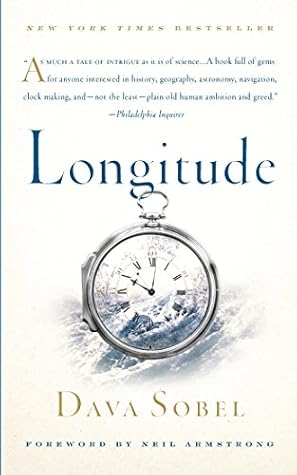More on this book
Community
Kindle Notes & Highlights
by
Dava Sobel
Read between
January 1 - March 1, 2017
relied on “dead reckoning” to gauge their distance east or west of home port. The captain would throw a log overboard and observe how quickly the ship receded from this temporary guidepost. He noted the crude speedometer reading in his ship’s logbook, along with the direction of travel, which he took from the stars or a compass, and the length of time on a particular course, counted with a sandglass or a pocket watch. Factoring in the effects of ocean currents, fickle
In 1736, an unknown clockmaker named John Harrison carried a promising possibility on a trial voyage to Lisbon aboard H.M.S. Centurion. The ship’s officers saw firsthand how Harrison’s clock could improve their reckoning. Indeed, they thanked Harrison when his newfangled contraption showed them to be about sixty miles off course on the way home to London.
Galileo’s technique to redraw the world. And it was in the arena of mapmaking that the ability to determine longitude won its first great victory. Earlier maps had underestimated the distances to other continents and exaggerated the outlines of individual nations. Now global dimensions could be set, with authority, by the celestial spheres. Indeed, King Louis XIV of France, confronted with a revised map of his domain based on accurate longitude measurements,
Harrison received £1,500, in recognition of the fact that his Watch “tho’ not yet found to be of such great use for discovering the Longitude . . . is nevertheless an invention of considerable utility to the Public.” He could expect another £1,000 when H-4 returned from its second stint at sea.
That autumn, the board offered to hand over half the reward money, on the condition that Harrison hand over to them all the sea clocks, plus a full disclosure of the magnificent clockwork inside H-4. If Harrison expected to receive the full amount of the £20,000 prize, then he would also have to supervise production of not one but two duplicate copies of H-4—as proof that its design and performance could be duplicated.
Act 5 George III—put caveats and conditions on the original act of 1714, and included stipulations that applied specifically to Harrison. It even named him in the opening language and described the current status of his contrariety with the board.
Soon another act of Parliament laid out the terms by which the longitude prize could yet be won. This new act of 1774 repealed all the previous legislation on longitude. Its terms for trying new timekeepers threw up the strictest conditions yet: All entries must be submitted in duplicate, then undergo trials consisting of a full
Earnshaw who changed the chronometer from a special-order curiosity into an assembly-line item. His own economic need may have inspired him in this pursuit: By sticking to a single basic design (unlike Arnold, who was almost too inventive for his own good), Earnshaw could turn out an Earnshaw chronometer in about two months and then turn the chronometer into ready cash.


